These stunning Alfa Romeos cost $2.8m - and there are just 33 on sale
If you miss out on the Alfa, there’s also a new N1A and a Lotus Type 66. But the competition to get them will be stiff.
Historic sports racers are the hottest thing in the collector car market right now, so it’s little surprise that echoes of such vehicles are showing up in new models. In recent weeks we’ve been introduced to three super-cool, limited-edition machines with more than a touch of yesterday. Unsurprisingly, perhaps, it’s the stunning offering from Alfa Romeo that has attracted the most attention.
Alfa Romeo 33 Stradale
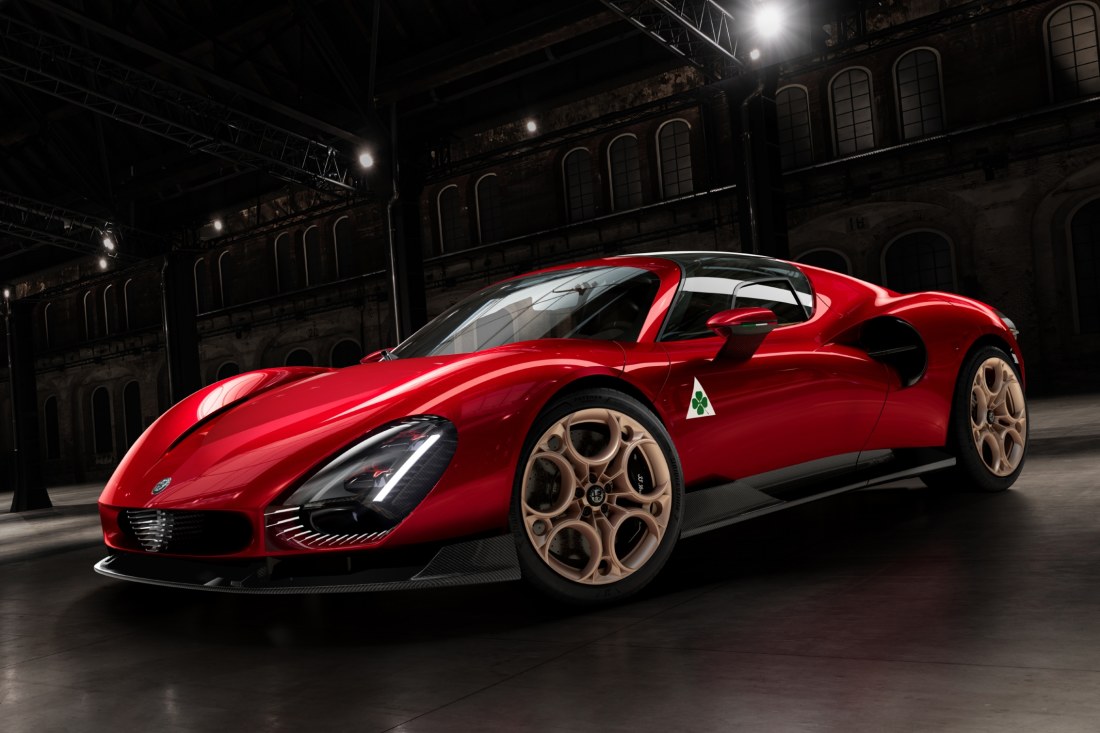
Hot stuff: the new Alfa Romeo 33 Stradale, inspired by the 1967 original.
The claim that Alfa Romeo’s 33 Stradale is “respecting history while taking the brand forward” might be marketing waffle, but who cares? The car itself is a thing of beauty. You are not likely to see one at the shopping centre carpark though: just 33 will be built, in keeping with the name, and the price reputedly starts at €1.7 million, ex-factory.
That’s a bit over $2.8 million apiece before taxes, freight and the almost limitless customisation options are considered.
Despite this, all were apparently presold before the photos were released.
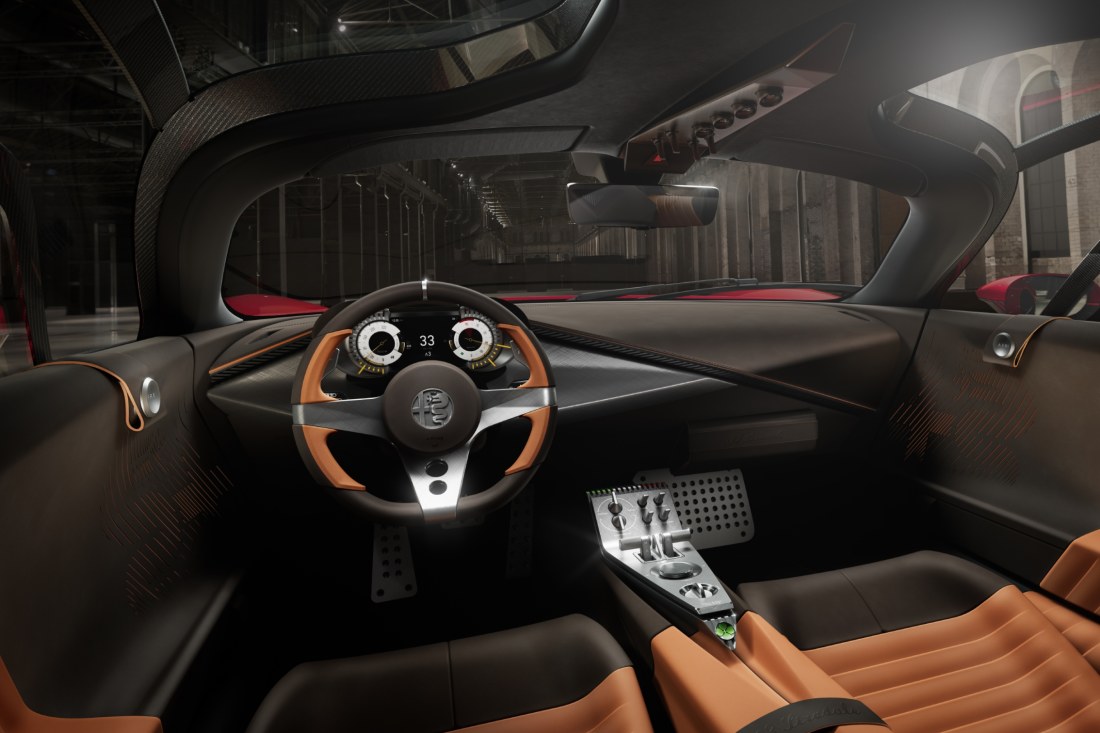
The 33 Stradale’s all-business interior.
The 33 might just represent the perfect high-end brand-building exercise for a company that has seen lean times of late. The gorgeous 1967 Alfa Romeo 33 Stradale road car (and the closely related, and no less beautiful, Tipo 33 race car) provides the influence, but Maserati supplies the drivetrain. Underneath, the newcomer is related to the MC20 supercar from Alfa’s Italian stablemate (both are part of the Stellantis Group), though the two cars look completely different.
The 33’s outer skin is shaped at Carrozzeria Touring Superleggera, using traditional Italian bodybuilding techniques. Despite the low production numbers, Alfa is offering the choice of a V6 twin-turbo mid-engined layout, or a full EV, the latter based on the forthcoming MC20 Folgore battery supercar.
The 33 will be road legal, in Europe at least, as well as a pretty handy track car. Alfa says it will accelerate to 100 in less than 3 seconds, regardless of drivetrain. It will be built only in left-hand drive, but Alfa Romeo has confirmed that one of the buyers is Australian.
Nichols Cars N1A
Former F1 engineer Steve Nichols has created a sublime-looking road car, inspired by a 1960s Can-Am race car from Kiwi engineer-driver Bruce McLaren. Known as the N1A, the newcomer packs a 7-litre V8 into a package with a claimed overall weight of just 900kg.

The Nichols 1A road car channels Bruce McClaren’s engineering élan.
Nichols says his car has had years of secret development, and that a batch of 15 “top-of-the-range” versions will start the production run soon. Initial pricing suggests the N1A will cost about $880,000, plus on-road costs.
The Nichols has a similar silhouette to the McLaren M1A of late 1963 though it is wider and has a longer wheelbase. The bodywork is made of modern F1-style graphene-infused carbon-fibre. Mechanically, the Nichols is quite analogue, with a naturally aspirated engine (sourced from GM but fettled to produce over 450kW) and a six-speed manual gearbox. However, it does benefit from some modern electronic driver aids and a lot more aerodynamic optimisation than was available in Bruce McLaren’s day.
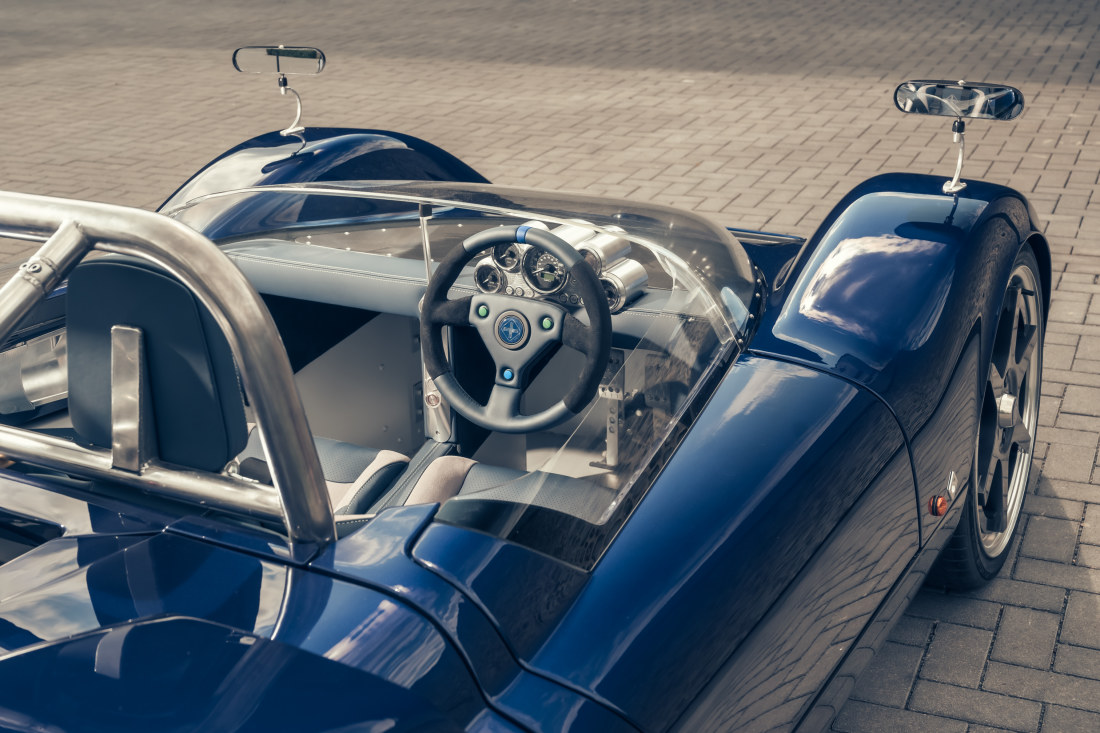
Although mechanically analogue, the car includes some modern electronic driver aids.
Nichols is an American, but the car is to be built in England, where he has achieved most of his success. He calls it a celebration of an era where racing cars still bore a resemblance to sports cars that were seen on the road.
In his race team days, Nichols headed the team that designed the McLaren MP4/4. This legendary Honda-powered F1 car won 15 of 16 races in 1988 in the hands of Ayrton Senna (eight wins) and Alain Prost (seven). Famously, it would have won all 16 Grands Prix if French driver Jean-Louis Schlesser hadn’t lost control while Senna was lapping him for the second time at the Italian Grand Prix at Monza. Schlesser rammed into the Brazilian, who was leading, sending him spinning off.
Lotus Type 66
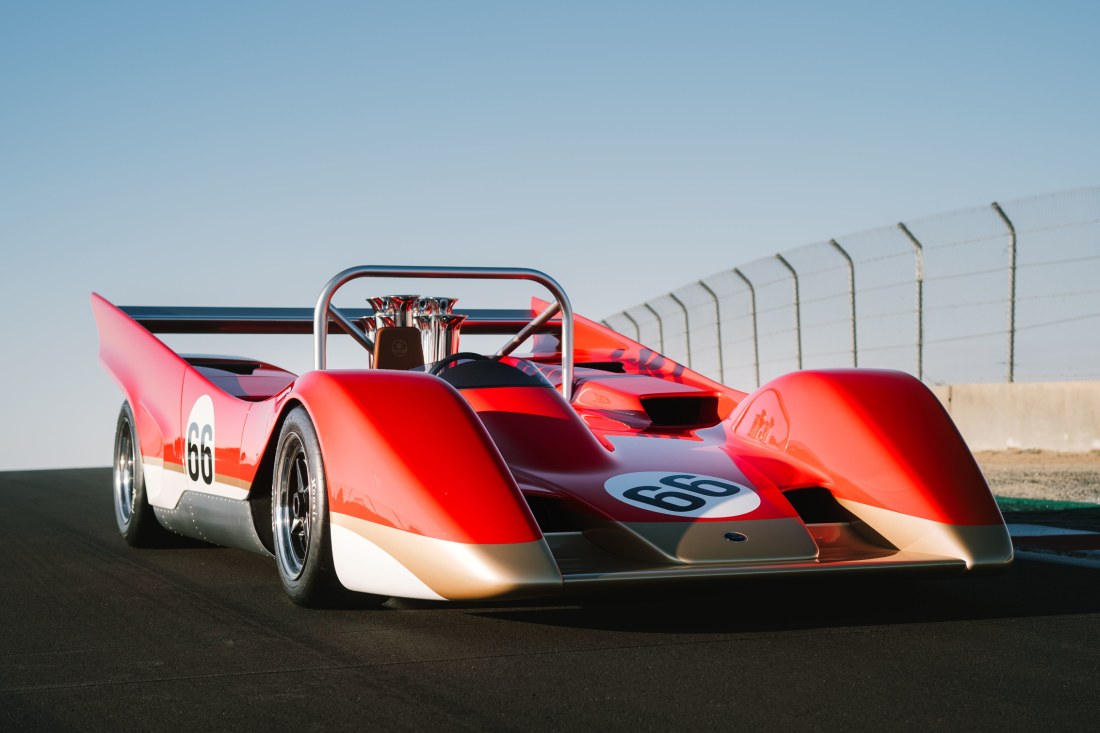
Strictly track-only: the new Lotus Type 66.
The Type 66 is a new model and a historic one wrapped up in the same red, white and gold livery. The official line is that the 66, unveiled in California last month, is a 2023 incarnation of a Colin Chapman-era design that didn’t make it to production.
Chapman founded Lotus 75 years ago and was responsible for its guiding ethos (“simplify and add lightness”) and for its best-remembered road cars, from the Seven though to the Elite, Elan and Esprit. He also created a string of innovative and hugely successful racing cars which won, among other things, six F1 driver’s championships and seven F1 constructor’s championships between 1963 and 1978.
In 1970, Chapman considered taking Lotus into the lucrative Can-Am series in the United States. It was dominated by McLaren, which won every single race in 1969 and 1970. A series of “Project 66” sketches and scale models was completed although, largely due to the demands of F1 racing, the project never progressed. Chapman died of a heart attack in 1982.
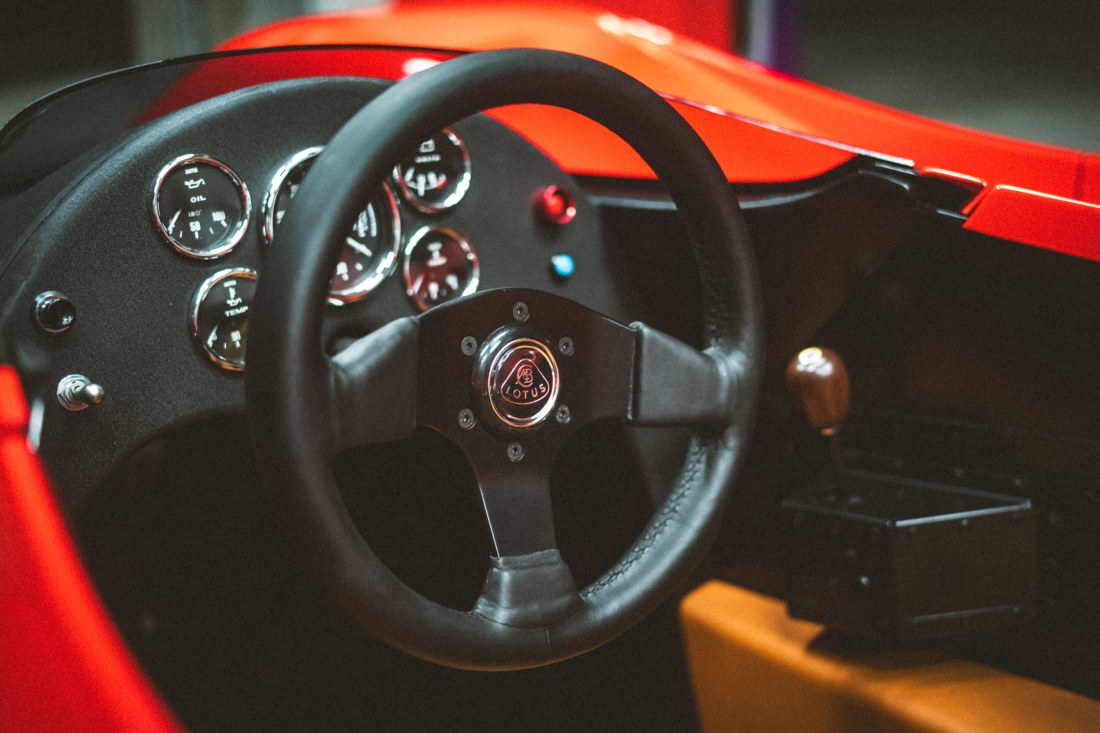
It harks back to Colin Chapman’s Type 66 concept, but the new 66 has power steering and a sequential racing gearbox, among other modern features.
Lotus says it will build 10 examples of the reborn 66, each priced at more than $2 million. Unlike the cars mentioned above, the 66 is for track use only. It maintains the basic lines of the original plus a mid-mounted pushrod V8, albeit with modern components and electronics to lift the output to nearly 620kW. Other 2023 touches include a sequential racing gearbox, electronic antilock brakes and power steering.

Lotus founder Colin Chapman in 1980, two years before his death. Getty
Colin Chapman’s son Clive runs Classic Team Lotus, which restores and maintains historic Lotus racing cars, and otherwise preserves the company’s motor sport heritage.
He unearthed original quarter-scale and tenth-scale drawings of the 66, which were digitised by Lotus design director Russell Carr and used to create 3D renders. Carr says the original shape needed to be reinterpreted to offer better occupant safety (not a big consideration in 1970), and to take advantage of what we now know about aerodynamics.
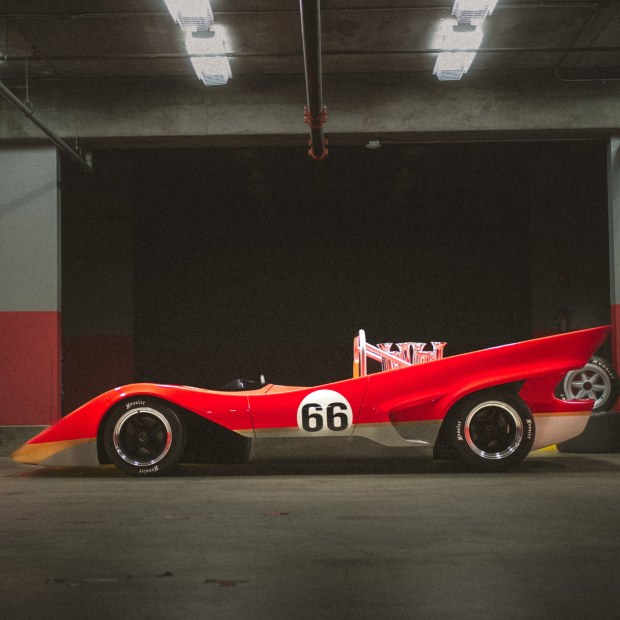
A former Lotus dream has been brought to life in the Type 66.
“There is a real delicacy in remastering the past,” Carr says, adding that, with the process used for the 66, it felt like the Lotus founder was “personally involved”.
Read next in Motoring by Tony Davis
READ MORE
